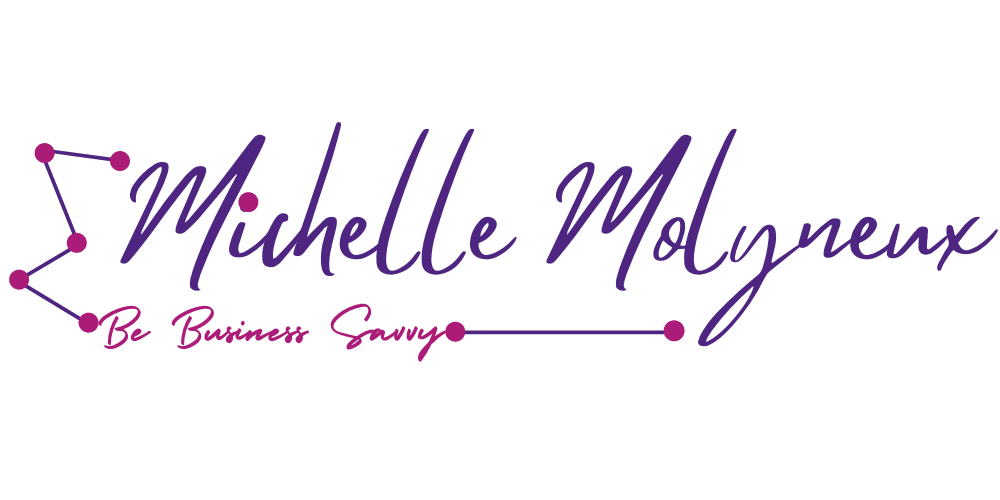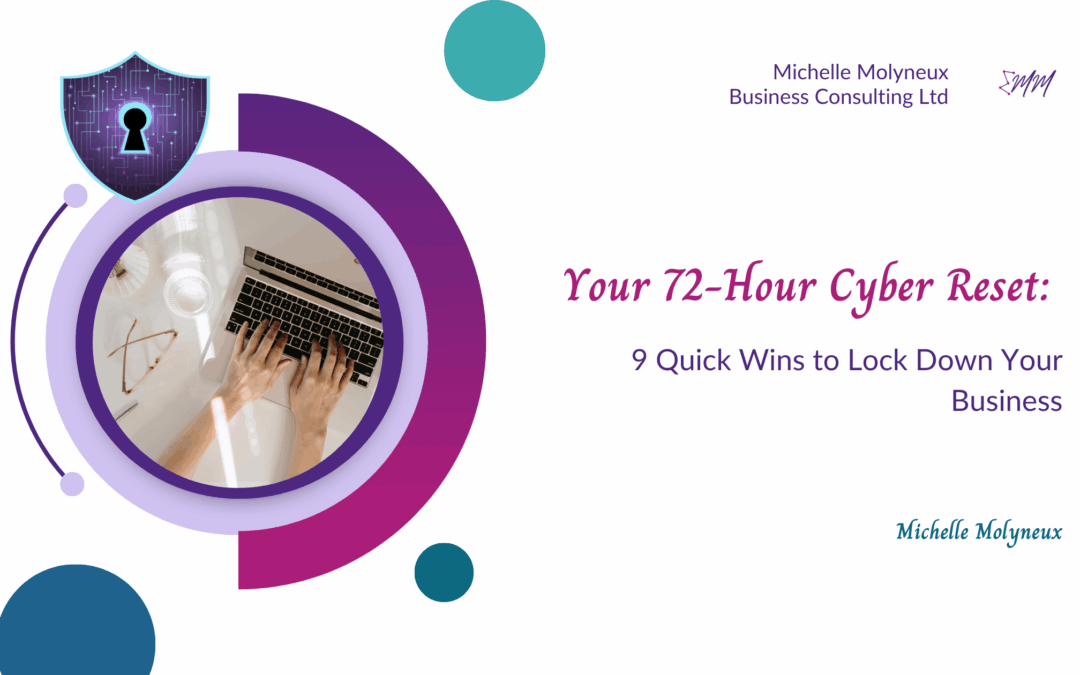Most small businesses don’t need a full IT overhaul — they need a clear place to start. A cybersecurity reset doesn’t have to be complicated. Most small businesses don’t need a full IT overhaul — they need a clear place to start. Cybersecurity can feel technical and overwhelming, especially when you’re wearing every hat in your business.
But here’s the truth: you don’t need to become a tech expert to stay safe online. A few simple, focused steps can drastically reduce your risk and keep your systems — and your sanity — intact.
That’s where the 72-hour cyber reset comes in. Think of it as a three-day refresh for your digital security. It’s not about perfection; it’s about quick, meaningful action that builds confidence and creates momentum.
Here’s how to reclaim control and create a safer, calmer digital space in just three days.
🔒 Day 1 – Secure the Essentials of Your Cybersecurity Reset
Focus: Access, passwords, and accounts
Every major security breach starts with one thing — access. If your passwords are weak or shared too widely, it’s like leaving the keys in your office door overnight.
Start your reset here:
-
Change your passwords. Begin with your email, social media, and cloud storage accounts. Use unique, strong passwords for each — at least 12 characters, mixing words, numbers, and symbols.
-
Turn on Multi-Factor Authentication (MFA) wherever possible. It adds an extra verification step (like a text code or app prompt) that blocks most hacking attempts instantly.
-
Review who has access. Check tools like Google Workspace, Microsoft 365, your CRM, and social media. Remove old logins, ex-contractors, or anyone who no longer needs access.
💡 Quick tip:
Use a password manager such as Bitwarden, 1Password, or Dashlane to securely store and update passwords. Keep a simple record of who holds admin rights — it’ll save hours in an emergency.
💻 Day 2 – Protect Your Devices
Focus: Software and physical security
Your devices are your business lifeline — laptops, tablets, phones, even routers. Out-of-date software is like leaving your windows open during a storm.
Here’s how to lock things down:
-
Update everything. Run updates for operating systems, browsers, plugins, and apps. Those little notifications often contain vital security patches.
-
Run antivirus or endpoint scans. Don’t assume you’re safe because you use a Mac. Malware targets everyone. Use built-in tools like Microsoft Defender or reputable antivirus software.
-
Secure your Wi-Fi. Change your router’s default password and ensure encryption is set to WPA2 or WPA3. If you work from cafés or co-working spaces, use a VPN to protect your connection.
💡 Quick tip:
Label all your devices and switch on Find My Device (or the equivalent). If a laptop or phone is lost, you’ll be able to track or remotely wipe it.
☁️ Day 3 – Backup and Behaviour
Focus: Habits and awareness
Technology alone isn’t enough. It’s the habits behind it that keep your business secure.
-
Back up your critical files. Follow the 3-2-1 rule: keep three copies of your data, on two types of storage (cloud + external drive), with one copy kept offline or off-site.
-
Check your incident plan. If something goes wrong — a lost laptop, a suspicious email, or a data breach — who do you call first? Have a short, written checklist with emergency contacts and steps.
-
Spot-test your team. Run a quick quiz or phishing simulation using free online tools. Awareness is your best defence against human error.
💡 Quick tip:
Host a lunch-and-learn or 10-minute debrief each quarter. Sharing lessons from near-misses helps your team stay alert without fear.
You can also explore the ICO’s latest cybersecurity tips for small businesses
🔁 How to Keep the Momentum Going
Once you’ve completed your 72-hour reset, don’t stop there. Cybersecurity works best when it becomes a routine — part of your business hygiene, just like reconciling invoices or renewing insurance.
-
Set a quarterly reminder to review access, updates, and backups.
-
Add cybersecurity to onboarding for new team members or contractors.
-
Create a “digital hygiene” folder in your business drive for policies, checklists, and backup plans.
You’ll quickly notice the difference: fewer worries, faster systems, and more trust from clients who know you take their data seriously.
If you handle client information, this foundation also supports your GDPR compliance and builds credibility with larger partners or corporate clients.
If you’d like extra guidance, the NCSC’s Small Business Guide is a brilliant next step.
❓ Cybersecurity FAQs for Small Businesses
1. What’s the best cybersecurity software for small businesses?
Start with built-in tools like Microsoft Defender or Apple’s Gatekeeper. Add reputable antivirus or endpoint protection such as Bitdefender, ESET, or Sophos.
2. How often should I back up my data?
Ideally every day for key business files, and at least weekly for full system backups. Automate cloud backups where possible.
3. What’s the biggest mistake small businesses make?
Assuming “it won’t happen to me.” Most attacks target small businesses because they’re easier to breach, not because they’re high-profile.
4. Do I need cyber insurance?
It’s worth exploring once you’ve implemented the basics. Insurance doesn’t replace good practice, but it can help you recover financially after an incident.
🌟 Wrap-Up
Nine small actions in three days can make a big difference. Each change builds another layer of protection and peace of mind.
Cybersecurity doesn’t have to be complicated or scary — it’s simply good business hygiene.
If you’d like to turn these quick wins into a lasting plan, download my free Cyber Basics Toolkit — it walks you through the next steps to build confident, practical cyber resilience for your business.
Next step: book a free clarity call to discuss the best way forward.

